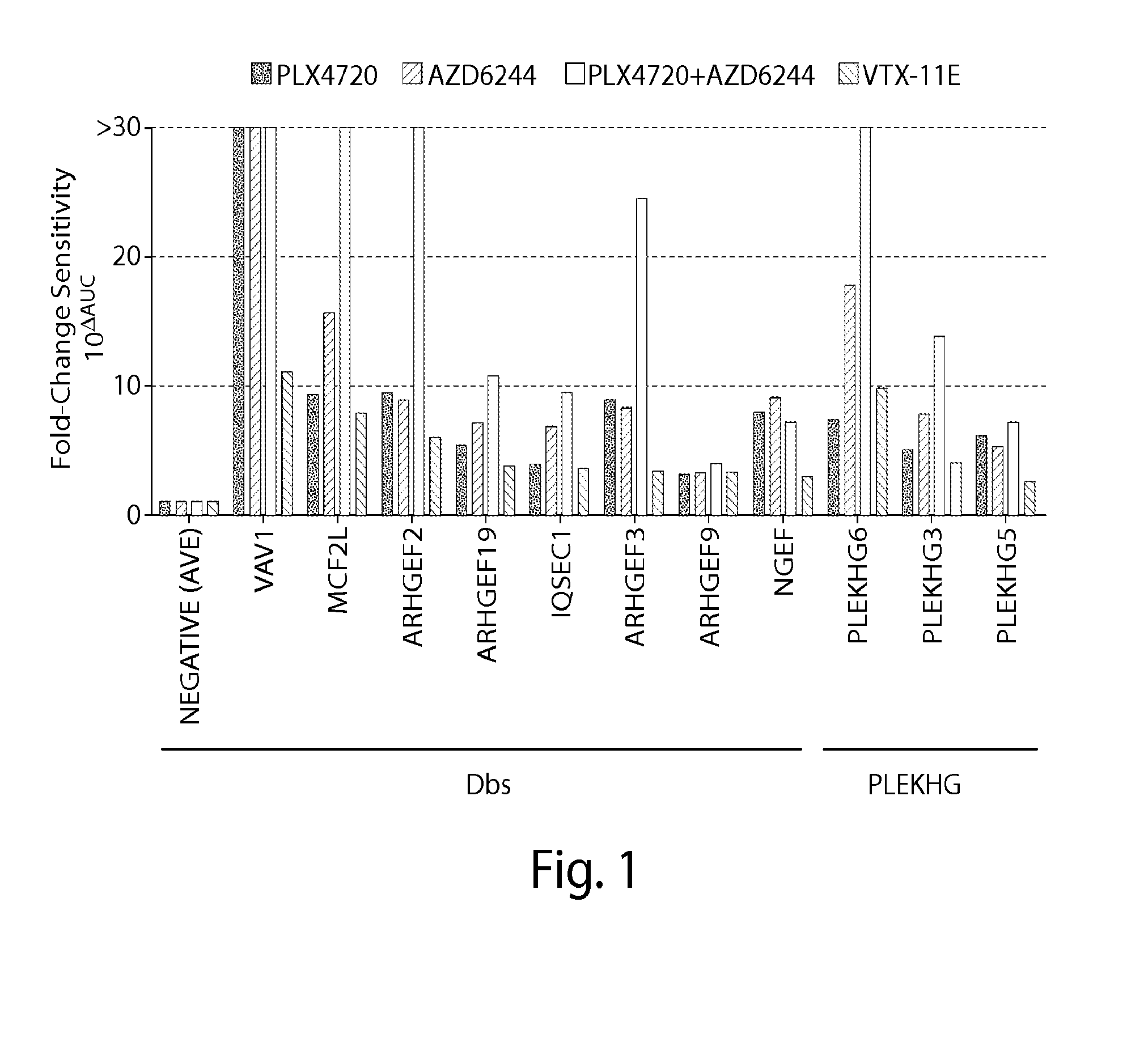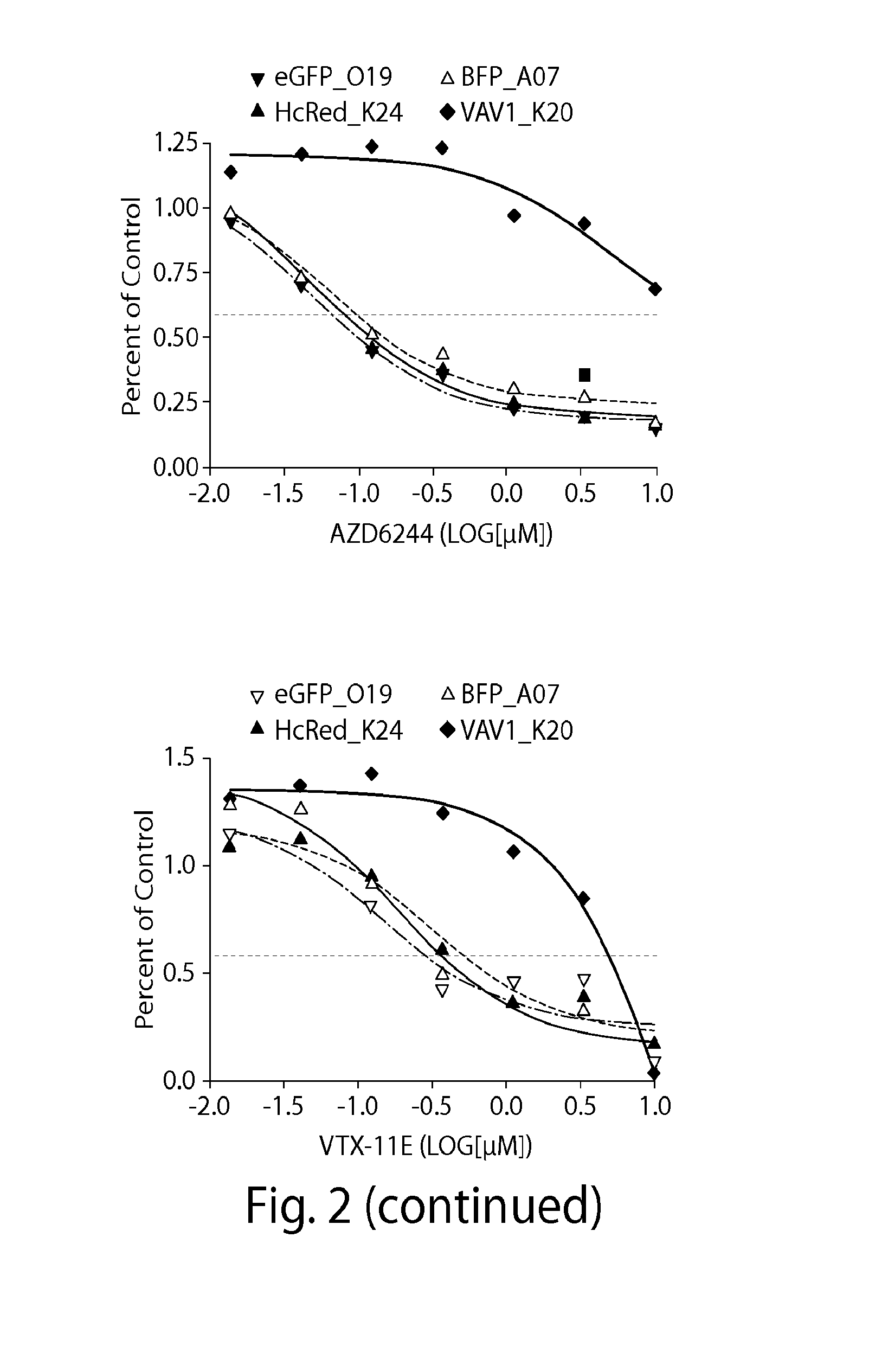Diagnostic and treatment methods in patients having or at risk of developing resistance to cancer therapy
a cancer therapy and cancer technology, applied in the field of diagnosis and treatment methods in patients having or at risk of developing resistance to cancer therapy, can solve the problems that the clinical response to targeted anticancer therapy is often confused by de novo or acquired resistance, and achieve the effect of effective long-term treatment strategy
- Summary
- Abstract
- Description
- Claims
- Application Information
AI Technical Summary
Benefits of technology
Problems solved by technology
Method used
Image
Examples
example 1
Materials and Methods
[0214]A library of ORFS in pDONR-223 Entry vectors (Invitrogen) was assembled. Individual clones were end-sequenced using vector-specific primers in both directions. Clones with substantial deviations from reported sequences were discarded. Entry clones and sequences are available via Addgene online. ORFS were assembled from multiple sources; including those isolated as single clones from the ORFeome 5.1 collection, those cloned from normal human tissue RNA (Ambion) by reverse transcription and subsequent PCR amplification to add Gateway sequences (Invitrogen), those cloned from templates provided by the Harvard Institute of Proteomics (HIP), and those cloned into the Gateway system from templates obtained from collaborating laboratories. The Gateway-compatible lentiviral vector pLX-Blast-V5 was created from the pLKO.1 backbone. LR Clonase enzymatic recombination reactions were performed to introduce the ORFS into pLX-Blast-V5 according to the manufacturer's pro...
example 2
Methods
Lentiviral Expression Library
[0223]The genesis, cloning, sequencing and production of the Broad-Institute / Center for Cancer Systems Biology Lentiviral Expression Library has been described previously [ref 17]. All ORFS described in this manuscript were expressed from pLX304, a lentiviral expression vector that encodes a C-terminal V5-epitope tag, a blasticydin resistance gene and drives ORF expression from a CMV-promoter. All clones described in this manuscript are publicly available via members of the ORFeome collaboration (orfeomecollaboration.org).
Genome Scale ORF Resistance Screens
[0224]A375 were robotically seeded into 384-well white walled, clear-bottom plates in RPMI-1640 (cellgro) supplemented with 10% FBS and 1% Penicillin / Streptomycin. The cloning, sequencing and production of the Broad-Institute / Center for Cancer Systems Biology Lentiviral Expression Library17 was arrayed on 47×384 well plates, permitting robotic transfer of virus to cell plates. Cell plates were r...
PUM
| Property | Measurement | Unit |
|---|---|---|
| diameter | aaaaa | aaaaa |
| size | aaaaa | aaaaa |
| pH | aaaaa | aaaaa |
Abstract
Description
Claims
Application Information
 Login to View More
Login to View More - R&D
- Intellectual Property
- Life Sciences
- Materials
- Tech Scout
- Unparalleled Data Quality
- Higher Quality Content
- 60% Fewer Hallucinations
Browse by: Latest US Patents, China's latest patents, Technical Efficacy Thesaurus, Application Domain, Technology Topic, Popular Technical Reports.
© 2025 PatSnap. All rights reserved.Legal|Privacy policy|Modern Slavery Act Transparency Statement|Sitemap|About US| Contact US: help@patsnap.com



